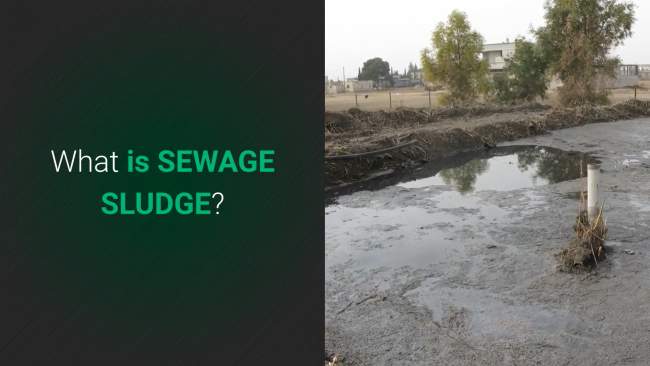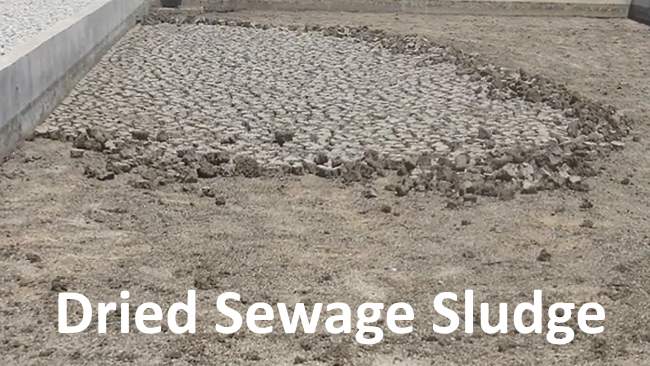
...............................................................................................................................................................
Sewage Sludge
Biosolids
and Wastewater Treatment Sludge Defined
Anaerobic Digestion Community
If
you are asking; “What is Sewage Sludge?” read on and you will find sewage
sludge, biosolids and Wastewater Treatment Sludge is defined and explained
here.
What
does SEWAGE SLUDGE mean?
Sewage
sludge is the remaining, semi-solid material that is left over after the
cleaned-up water is discharged from a sewage treatment works.
It
is the solid material which settles out from municipal or industrial
wastewater, when the foul sewage is de-gritted and held in large tanks for
between half an hour to one and a half hours.
On
arrival at a sewage works (called “WasteWater Treatment Works” by Utility
Companies) fresh sewage or wastewater flows first into a grit chamber.
This
is a long narrow tank that is designed to slow down the flow so that solids
such as sand, and grit, coffee grounds, and eggshells will settle out of the
water. It then flows into a “primary settlement tank”.
In
the primary settling tank, approximately 50% of the suspended solid matter will
settle out in an hour and a half, in which time (on average) the incoming
mixture of solid and liquid sewage contaminants stays in the tank.
The
water overflows through weirs on the surface and goes on for further cleaning
(treatment).
What
remains in the “primary settling tank” is a collection of solids known as raw
sewage sludge or primary solids.
It
is said to be “fresh” at the start, but soon the dissolved air is used up and
anaerobic processes (decomposition or rotting without air (oxygen)) become
active.
This
sludge would start to rot (become putrescent), in a short time once anaerobic
bacteria take over, and produce an unpleasant odor.
So,
it is removed from the “primary settling tank” (also called a sedimentation
tank) before this happens.
Usually,
the fresh sewage sludge is continuously extracted from the tank using
mechanical scrapers, and is passed on in a number of ways, for further treatment
and disposal.
Examples
of the ways further treatment is achieved are, Activated Sludge Aeration
(Extended Aeration), Imhoff Tanks, Upflow Anaerobic Sludge Blanked (UASB).
Imhoff
tanks work in the absence of air (oxygen), and provide a form of anaerobic
digestion.
Imhoff
tanks are used infrequently now, as the digestion process at the low
temperatures of unheated sewage, is quite slow and requires large (and as a
result also, “costly to build”) tanks.
UASBs
are another method which uses a combination of aerobic and anaerobic treatment
zones.
Aeration
(Extended Aeration) is what takes place in most sewage works, and aeration
itself results in yet more sewage sludge (Return Activated Sludge – RAS) being
produced.
So,
tell me simply. What is SEWAGE SLUDGE?
Sewage
sludge is the general term for all the sludges produced by all the above
processes.
Watch
the video we made which is based upon the text in this page:
Watch the video we made which is based upon the text in this page:
Are
you still reading? Then let’s talk about the history of sewage sludge:
The
Recent History of Sewage Sludge
In
the 1970s and until recently, fossil fuels were burnt to heat and dry the
sludge so that it could be incinerated.
But,
with recent improvements in anaerobic digestion technology it has been realized
that rather than spend money to incinerate organic sludge, the sludge can be
used to make energy in the form of “biogas”.
Biogas
production takes place in separate sludge digestion tanks (biogas digesters)
that operate at higher temperatures than the lower story of an Imhoff tank and,
as a result, digest much more rapidly and efficiently.
In
an Imhoff tank, fresh sludge is passed through a slot to the lower story or
digestion chamber where it is decomposed by anaerobic bacteria, resulting in
liquefaction and reduced volume of the sludge.
After
digesting anaerobically for an extended period, the result is called “digested”
sludge, or “digestate”.
Historically,
sludge was disposed of in rural sewage works by drying and then landfilling.
In
the cities and conurbations, the sewage sludge was too great in quantity to dry
it in the air (drying beds), so it was tankered out to farms and spread on the
land, or put on ships and pumped out into the sea.
Septage
is a related term, for the sewage sludge from the simple wastewater treatment
that occurs in on-site sanitation systems, such as septic tanks.
Biosolids
is a term often used in conjunction with reuse of sewage sludge after sewage
sludge treatment.
Biosolids
can be defined as organic wastewater solids that can be reused after
stabilization processes such as anaerobic digestion and composting.
Opponents
of sewage sludge reuse reject this term as a term devised by public relations
experts, which is used to disguise the very unappealing source of the material.
Sewage
Sludge Treatment by Anaerobic Digestion
Increasingly
sewage sludge is being treated using the anaerobic digestion process, with the
advantage that the Wastewater Treatment Works operator gains renewable power as
electricity, which can then 24/7 power the wastewater treatment works itself.
Press
Report (4 December 2018):
At all Wastewater Treatment Works/ Sewage Works it is
essential that the operator has reliable equipment, and the most critical
requirement is that pumps work reliably when pumping sludges, so we thought we
would include the following Press Release
Pulp
goes the food waste as ultra-reliable Landia pumps help make AD substrate
Pumps
and mixers from Landia are playing a key role in the success of Gemidan Ecogi’s
new pre-treatment technology that processes source-separated food waste to into
a high-quality pulp-based substrate for AD.
Initially,
during a flow test at the KomTek Miljoe waste treatment facility in Jutland,
Denmark, an 11kW Landia pump produced much better results than a 22kW model
from another manufacturer – despite the challenging raw pulp having a solids
content of up to 17%.
With
Danish municipalities on a deadline of 2022 to ensure that 50 percent of waste
is recycled, AffaldPlus’ Energy Manager, Ole J. Andersen, believes that the
decision to challenge the environmental credentials of equipment suppliers is
already paying off.
“To truly embrace the circular economy at our waste
treatment facility” he said, “we must practice what we preach and look very
closely at the lifetime costs of items such as pumps and mixers to make sure,
for example that energy and maintenance costs are low. There was never any
discussion about buying the cheapest possible plant. Here, we are investing in
the future, so it is only right that we choose strong reliable equipment”.
Landia
pumps image for article about "What is Sewage sludge".
Energy
Manager Ole J. Andersen says that “with Landia’s stainless steel pumps and
mixers, we have a very robust and reliable system”.
Gemidan
Ecogi’s pre-treatment technology at AffaldPlus’ facility handles waste for six
municipalities in South and West Zealand, adding water to collected waste,
which is then driven through a centrifuge pulper the waste is dissolved into a
viscous, porous mass for use as raw material in an AD/biogas plant. The
degassed biomass is dispersed on fields as a fertilizer.
Ole J. Andersen added: “Processing organic
household waste with the Gemidan Ecogi process has been a new departure for us,
but with Landia’s stainless steel pumps and mixers, we have a very robust and
reliable system. Servicing is also easy and safe with everything conveniently
located, rather than having to go down into the tank”.
The
new plant has met all new requirements for the use of the waste gas pulp on
farmland, which recently entered into Danish legislation. In fact, the biopulp
from the Gemidan Ecogi plant is up to five times cleaner than the law requires.
Visit
the Landia website for more information: www.landiaworld.com
Sewage
sludge treatment in the UK has been opened up for the first time to the public
market.
Check
out the video below to find out about the new opportunity for sewage sludge
co-digestion in anaerobic digestion plants by mixing the sludge with other AD
feedstocks before feeding it into biogas plants.
Associates, Anaerobic
Digestion Community Website offers consultancy services and promotes and
develops anaerobic digestion and biogas production.
The production of biogas is
now very much a proven technology, and AD Technology is bringing big benefits
to the rapidly rising number of people that are investing in it. But, we
are still finding that a large number of its potential beneficiaries are
not aware of the true potential of the anaerobic digestion process.
Our mission is to spread the
word about the benefits of anaerobic digestion and biogas production.
This “Anaerobic Digestion
Community Website” is maintained as an independent web site by EurIng Steve
Last Bsc CEng MICE MCIWM CEnv.
I have worked as an environmental consultant,
for more than 20 years, and for the most of that time I have been
providing advice on waste processes, to the Waste Management Industry.
Anaerobic Digestion
Consultancy Services
I provide consultancy services
on Anaerobic Digestion and Biogas Projects through my consultancy company IPPTS Associates.
We offer consultancy advice on
Anaerobic Digestion, including feasibility studies, advice on feedstocks, mass
balances, AD Plant infrastructure design, refurbishment of old AD systems etc.,
and provide free quotations for our services, on request.



No comments:
Post a Comment